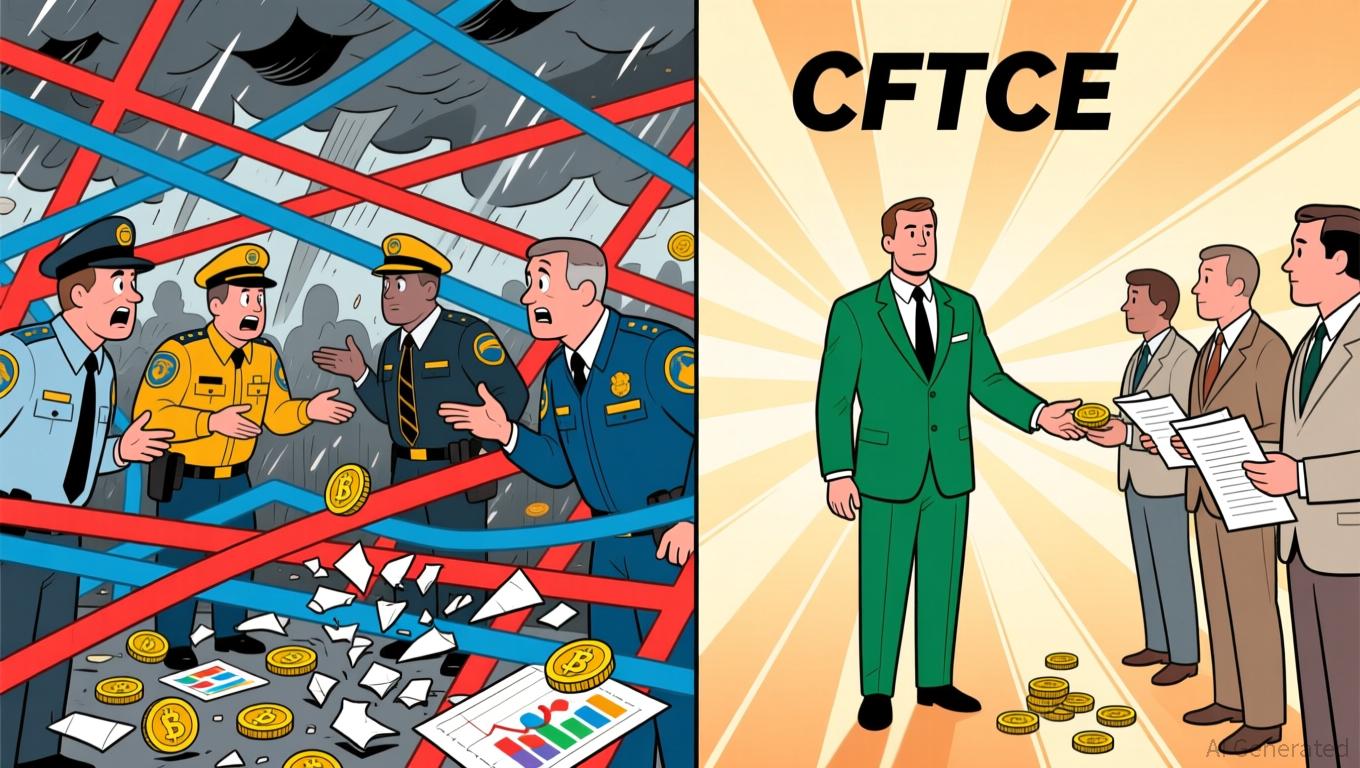Modern Monetary Theory and Market Outlook for 2026: Does Bold Investment in Stocks and Emerging Economies Make Sense?
- Modern Monetary Theory (MMT) sparks debate in 2025 as governments expand fiscal spending amid inflation and AI-driven economic shifts. - Proponents argue deficit spending boosts growth, while critics warn of inflation risks and fiscal unsustainability as U.S. deficits hit $7 trillion. - Fed officials clash over policy: Hammack prioritizes inflation control, while Jefferson advocates patience as AI reshapes labor markets. - MMT-driven liquidity could lift emerging markets if Fed rates stay low, but sudden
The MMT Framework: A Double-Edged Sword
According to
The Federal Reserve’s careful approach in 2025 highlights these conflicting views. Beth Hammack, President of the Cleveland Fed, has pointed out that ongoing inflation restricts the Fed’s ability to lower rates, even as the job market softens, as noted by

Implications for Equities and Emerging Markets
Fiscal expansion under MMT could, in theory, drive stock markets higher by increasing liquidity and supporting company profits. However, the actual effects are more complex. For developing economies, the outcome depends on international capital movement and differences in interest rates. Should U.S. fiscal stimulus result in lower real rates, investors might seek better returns in emerging markets, boosting stocks in areas like Southeast Asia and Latin America, as observed by
Nevertheless, significant risks remain. Emerging economies are especially exposed to abrupt changes in global liquidity. For example, if inflation forces the Fed to sharply raise rates, capital could exit these markets, leading to falling currencies and stock declines. This trend is already visible in 2025, with MarketAxess Holdings Inc. noting a 14% annual increase in emerging market trading volumes, signaling both hope and instability, as reported by
Amazon’s push into developing markets through its Amazon Bazaar app—which targets 14 countries with extremely affordable products—further demonstrates the link between fiscal policy and market behavior, as covered by
Balancing Risks and Opportunities
The argument for taking strong positions in stocks and emerging markets under MMT depends on two main points:
1. Inflation Management: If governments can keep inflation under control while expanding fiscal policy, stocks—especially those linked to AI and infrastructure—could perform well.
2. International Capital Movement: A more accommodative Fed and supportive MMT policies may encourage investment in emerging markets, but any sudden tightening could quickly reverse these flows.
On the flip side, excessive government spending—leading to doubts about U.S. debt or a spike in inflation—could hurt both stocks and emerging markets. Jim Puplava from the Foundation for Economic Education points out that U.S. debt could hit $50 trillion by 2030, raising fears of financial repression and a weaker dollar, as reported by
Conclusion: A Calculated Approach
Although MMT presents a strong case for increased government spending, investors should proceed carefully with stocks and emerging markets in 2026. Spreading investments across different asset types—including inflation-protected bonds and commodities—could help guard against possible downturns. In emerging markets, targeted opportunities in technology and consumer sectors may outperform, but broad exposure still carries significant geopolitical and economic risks.
As decision-makers strive to balance growth with stability, the ultimate test for MMT will be whether it can deliver long-term economic gains without sparking runaway inflation. Until there is more clarity, investors would be wise to remain cautious and flexible as they seek to benefit from the potential of this economic theory.
Disclaimer: The content of this article solely reflects the author's opinion and does not represent the platform in any capacity. This article is not intended to serve as a reference for making investment decisions.
You may also like
Bitcoin News Update: Trump's Pause on China Tariffs Triggers Worker Protests Over Future of U.S. Shipyards
- Trump administration suspends China tariffs on shipbuilding imports, drawing labor union criticism over domestic industry risks and worker refunds. - 175 H-1B visa abuse investigations reveal $15M+ potential refunds, as unions warn of wage suppression and corporate favoritism in trade policies. - Square enables Bitcoin payments for 4M U.S. merchants, advancing crypto adoption while Trump dismisses inflation concerns and vows meatpacking crackdowns.

Bipartisan Legislation Assigns Crypto Regulation to CFTC to Clarify Oversight Uncertainty
- U.S. lawmakers propose shifting crypto regulation from SEC to CFTC via a bipartisan bill, reclassifying most digital assets as commodities. - The draft aims to resolve regulatory ambiguity stifling innovation, building on stalled House CLARITY Act efforts during the 38-day government shutdown. - Market optimism surged as shutdown relief pushed Bitcoin above $105k, with ETF outflows persisting amid anticipation of clearer CFTC-led oversight. - Critics warn of CFTC resource constraints, while proponents hi

Solana News Update: DevvStream Invests in SOL Despite $11.8M Deficit, Shows Strong Confidence in Sustainable Blockchain Prospects
- DevvStream Corp. (DEVS) disclosed holding 12,185 SOL and 22.229 BTC, staking SOL for 6.29% annualized yield amid a $11.8M fiscal 2025 loss. - The company launched a digital asset treasury via BitGo/FRNT Financial, securing $10M liquidity from a $300M convertible note facility. - Plans include a 2026 tokenization platform for carbon credits and Solana staking, aligning with its de-SPAC/Nasdaq listing strategy. - Despite crypto market outflows, DevvStream's staked SOL attracted inflows, contrasting broader